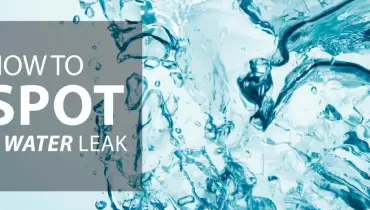
Spotting a water leak early can prevent costly damage. Rainbow Restoration highlights key signs to watch for.
|
Dripping faucets and showerheads wastes money, but it’s those other types of leaks – such as those from pipes, windows, and the roof – that can damage your home, encourage mold growth, and even cause a flood. Fortunately, spotting a leak is fairly easy, as long as you employ the right techniques and know where to look.
Consider the most likely places for water leaks to occur and check them frequently. Then, make note of any preventative measures you can take to stop future water leaks before they start.
Washing Machine Hoses
Washing machine failure can send huge amounts of water surging into your laundry room, but a small leak may go undetected for a while. Check the washing machine hose for leaks or excessive wear indicating a leak could develop soon.
Replace a worn hose with a steel-braided version, not the rubber kind, which is prone to wearing out sooner. Change out the hose every five years to help prevent catastrophic failure.
Refrigerator
Even if your fridge doesn’t have an icemaker or water dispenser, it can still leak. After all, every refrigerator has a defrost drain and drain pain, two possible sources of water leaks.
Hoses behind the fridge are also prone to failure. Small drips caused by loose washers could go unnoticed for weeks or even months, slowly rotting the floor beneath the fridge.
If you see water pooling on the floor in front of the fridge, that’s a clear sign you leak. It’s wise to also hire a plumber to double-check the hose connections and make any necessary replacements before a leak develops.
Dishwasher
To check for a leak under the dishwasher, remove the front panel below the door and shine a flashlight inside. If you see any water dripping, call a professional to assess the extent of the damage.
Even if you don’t see any leaks, place newspaper under the dishwasher and pour water into the bottom of the appliance. After a few minutes, pull the newspaper out and see if it’s wet. If so, you have a leak that needs to be addressed.
Sinks
Bathroom and kitchen sinks have plumbing beneath them, usually hidden inside a cabinet. Check this area frequently for pooling water, mold or rotting wood. As soon as you see any signs of damage, look into having a repair.
Plumbing
Indoor plumbing is easy to take for granted, but all those pipes running behind your walls are possible sources of water leaks. Since it’s not easy to check the pipes themselves for leaks, watch for other signs of hidden plumbing leaks, including:
- Higher-than-usual water bills
- A water meter that shows water consumption after an hour of intentionally not using any water at all
- Mold or mildew on the walls
- Sagging or water-stained ceilings or walls
- Cracked or warped flooring
Roof
Every time it rains, your home could experience water damage if the roof leaks. Telltale signs include:
- Algae and mold growing on the roof
- Buckling, curling, or missing shingles
- Damaged flashing around roof penetrations
- Stained ceilings on the upper floor of your home
Windows and Doors
Windows and doors could also leak every time it rains. Look for:
- Peeling paint on the windowsill, doorframe, or interior wall near the window or door
- Rotting wood on the exterior
- Pooling water on the floor
Replacing caulk and weather stripping may be enough to thwart a leaky window or door, but if structural damage has already occurred, you need remediation services. This is true regardless of the source of water damage. For help recovering from water leaks or flooring, please contact Rainbow Restoration®.
